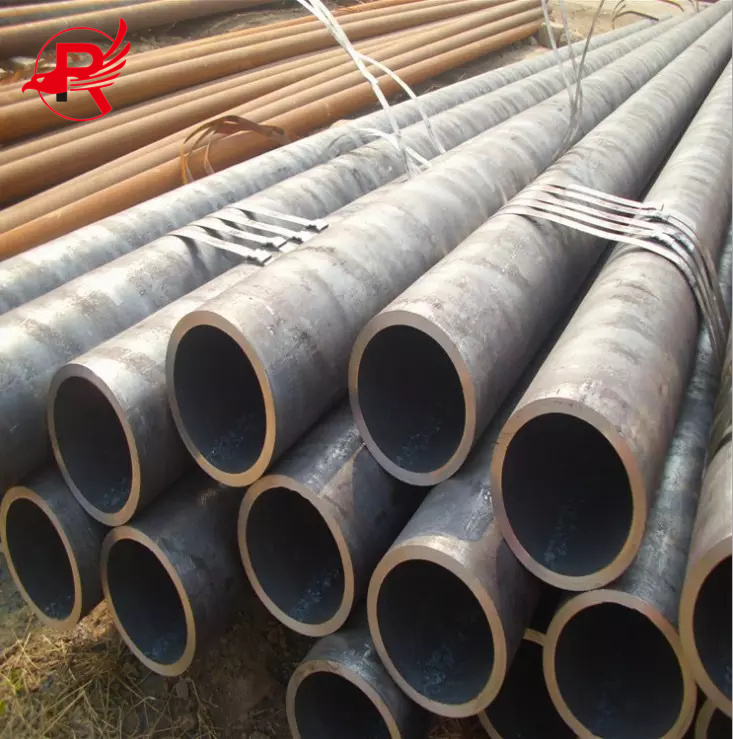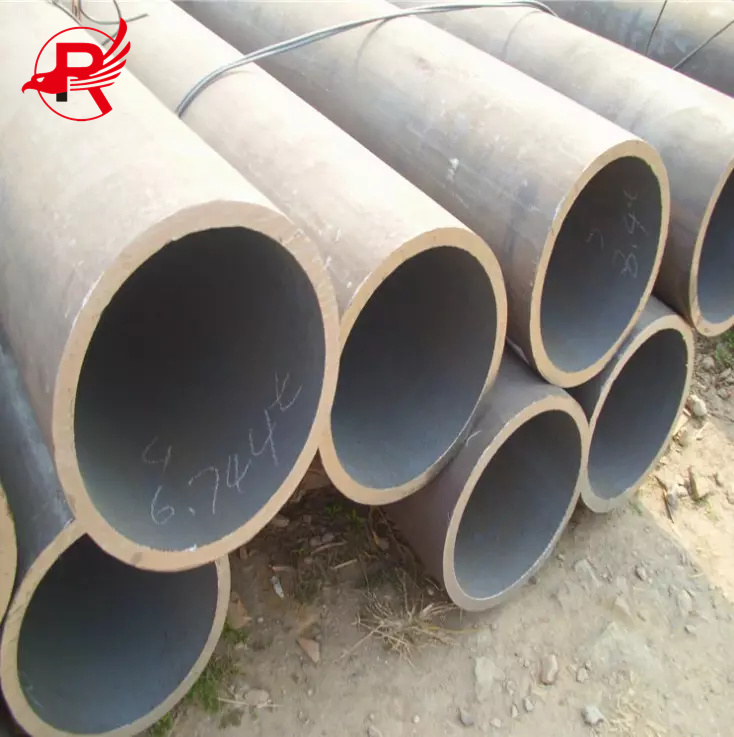Hot Rolled Seamless Tube Production – Royal Steel Group
Hot Rolled Seamless Tube Production - Royal Group
Hot rolling (extruded seamless steel pipe): round tube billet → heating → piercing → three-roll cross rolling, continuous rolling or extrusion → stripping → sizing (or reducing) → cooling → straightening → hydraulic test (or Flaw detection) → marking → storage
The raw material for rolling seamless pipe is round tube billet, and the round tube embryo should be cut by cutting machine to grow billets with a length of about 1 meter, and transported to the furnace by conveyor belt. Billet is fed into the furnace to heat, the temperature is about 1200 degrees Celsius. The fuel is hydrogen or acetylene. The temperature control in the furnace is a key issue. After the round tube is out of the furnace, it must be pierced through a pressure piercer.
Generally, the more common piercer is the cone wheel piercer. This kind of piercer has high production efficiency, good product quality, large perforation diameter expansion, and can wear a variety of steel types. After piercing, the round tube billet is successively subjected to three rounds of cross rolling, continuous rolling or extrusion. After extrusion, the tube should be taken off for sizing. Sizing by high-speed rotary cone drill holes into the billet to form a tube. The inner diameter of the steel pipe is determined by the length of the outer diameter of the drill bit of the sizing machine. After the steel pipe is sized, it enters the cooling tower and is cooled by spraying water. After the steel pipe is cooled, it will be straightened.
After straightening, the steel pipe is sent to the metal flaw detector (or hydraulic test) by the conveyor belt for internal flaw detection. If there are cracks, bubbles and other problems inside the steel pipe, they will be detected. After the quality inspection of steel pipes, strict manual selection is required. After the quality inspection of the steel pipe, paint the serial number, specification, production batch number, etc. with paint. And hoisted into the warehouse by crane..

